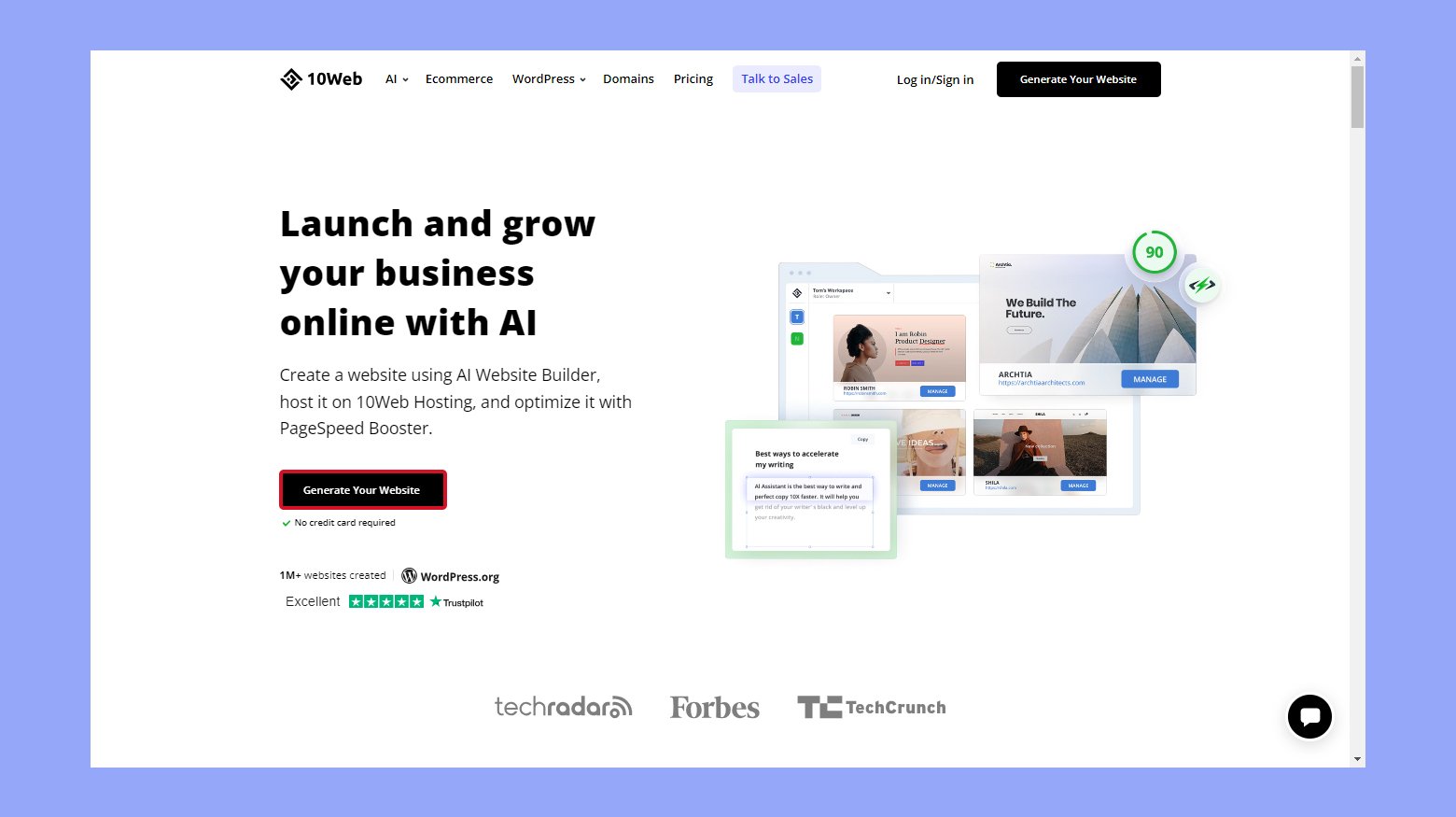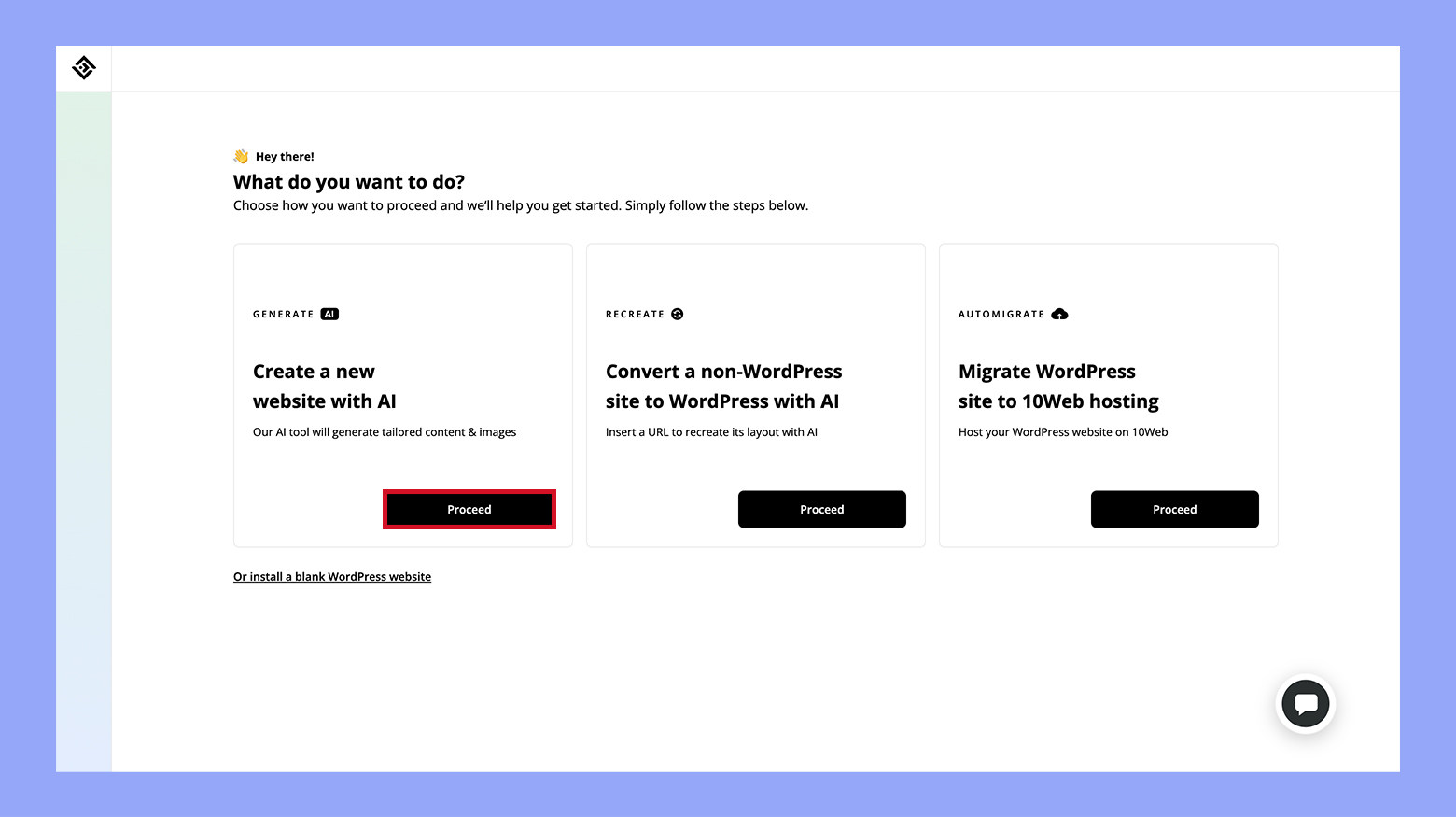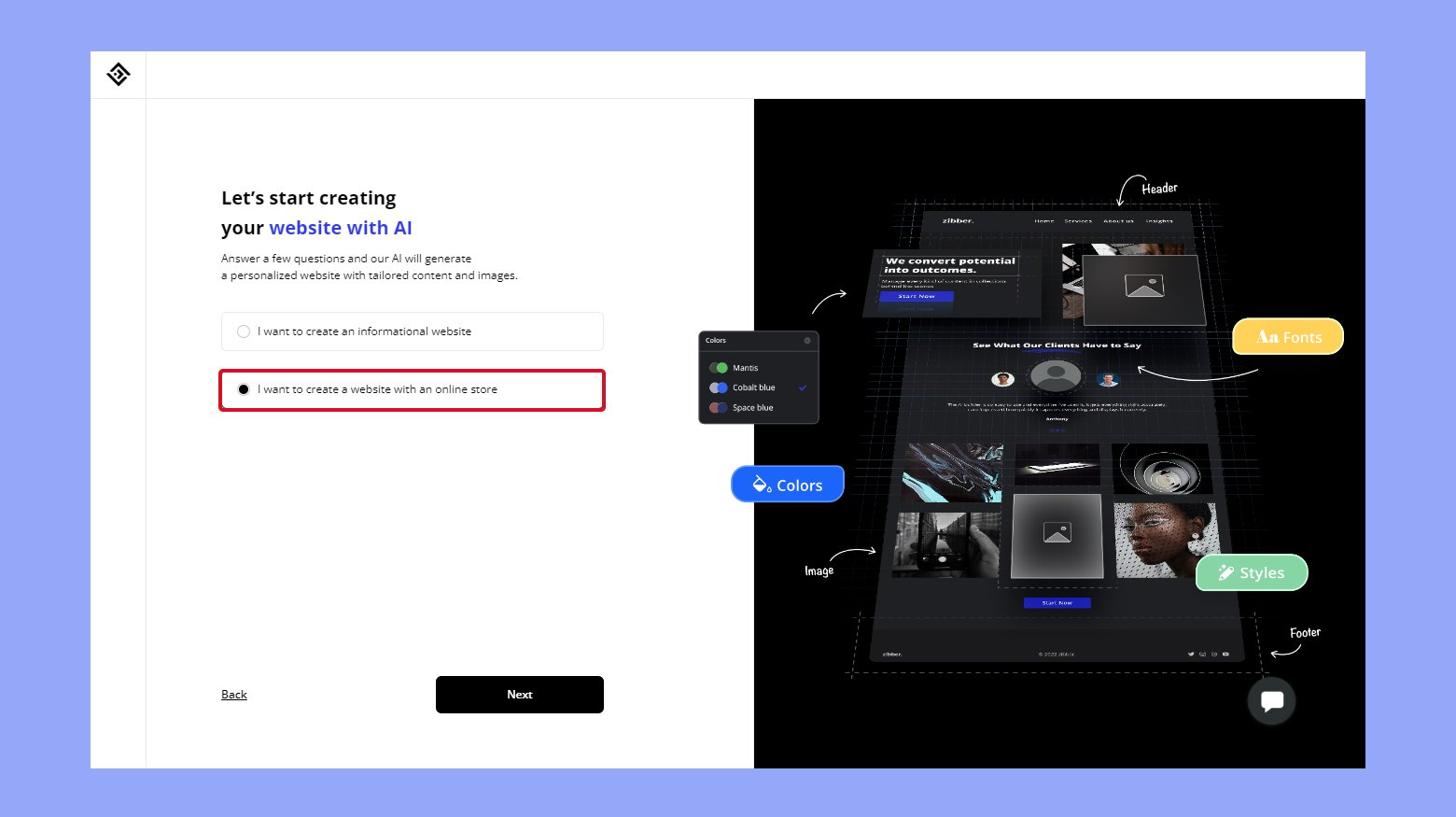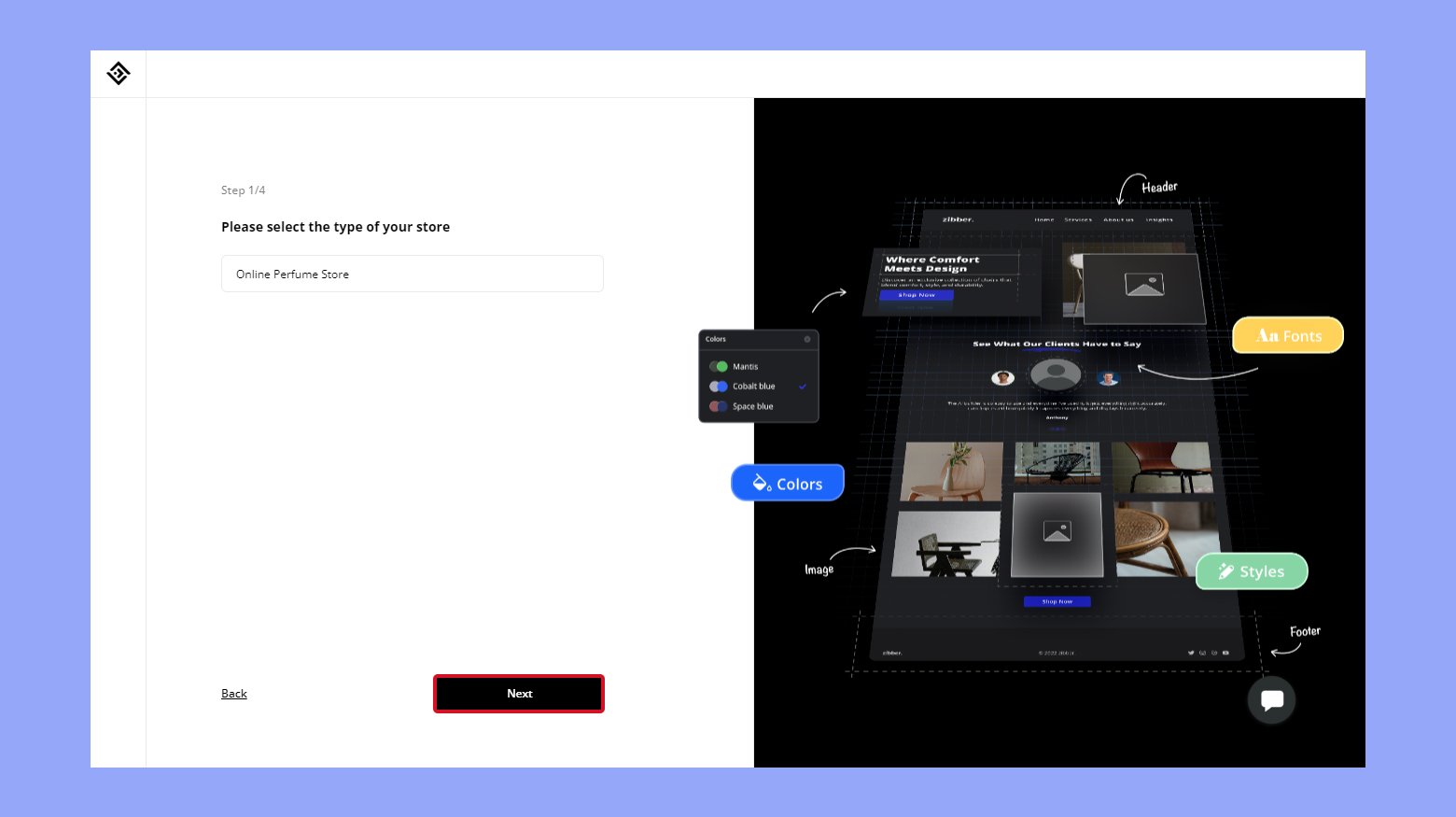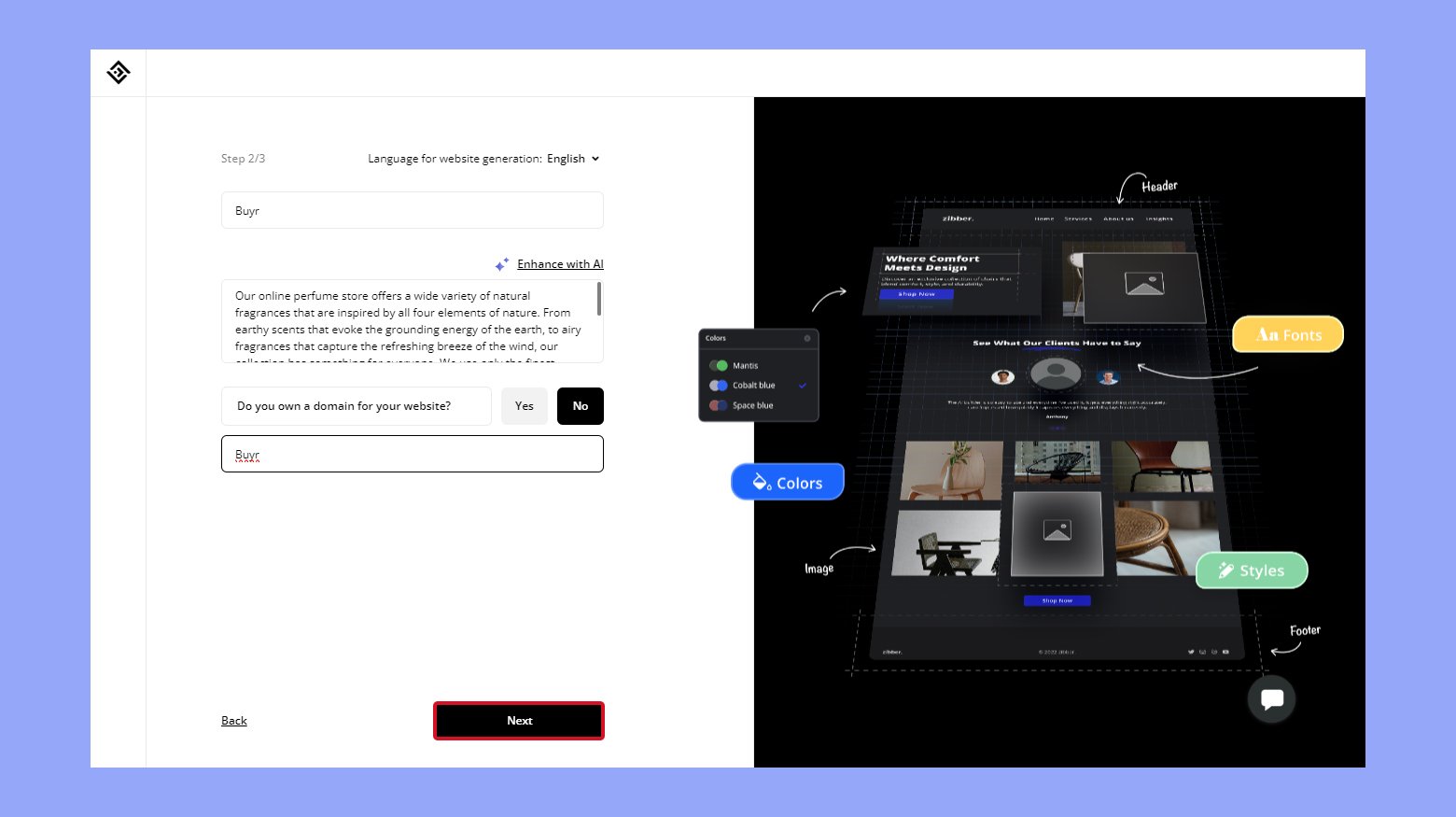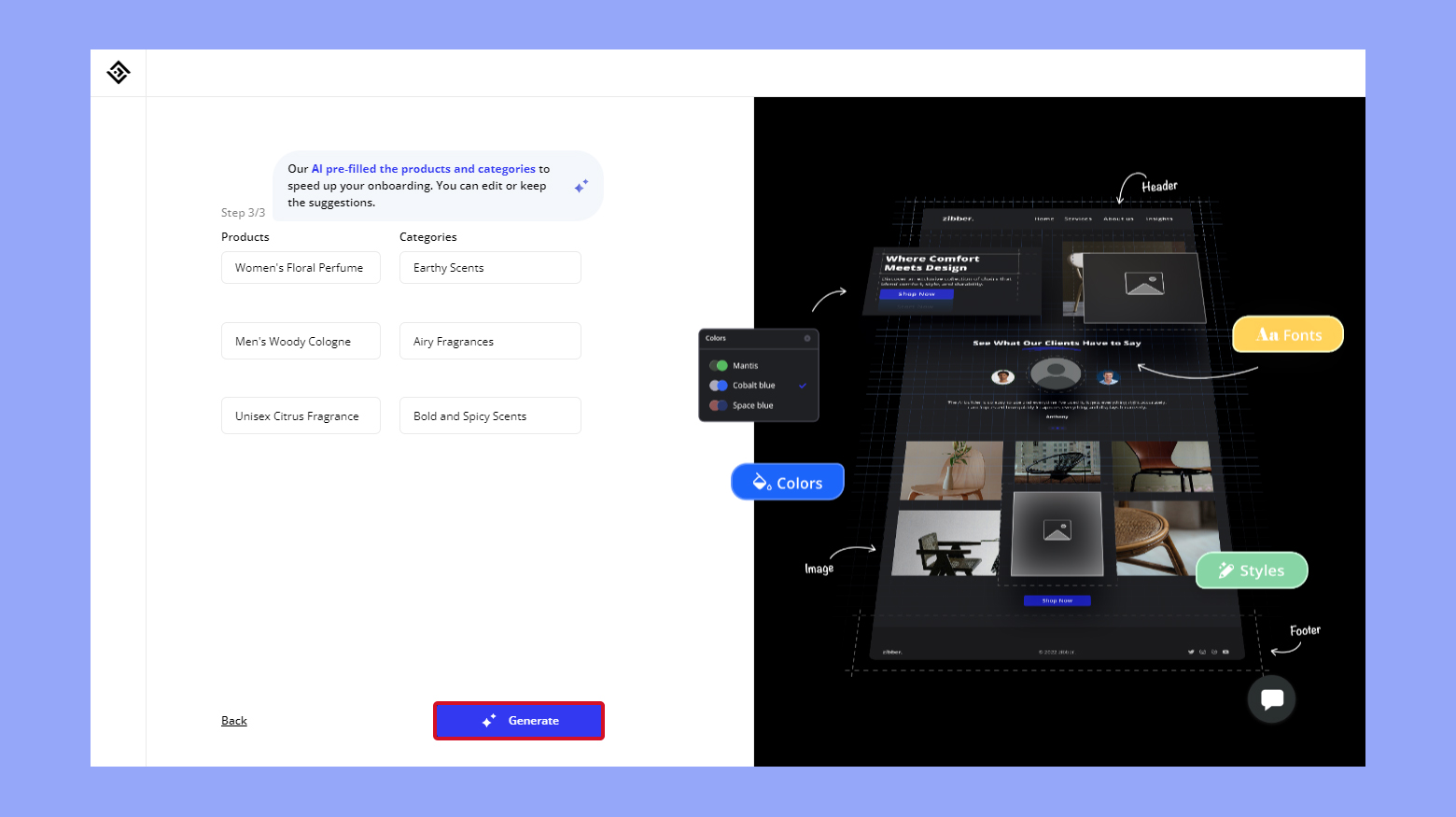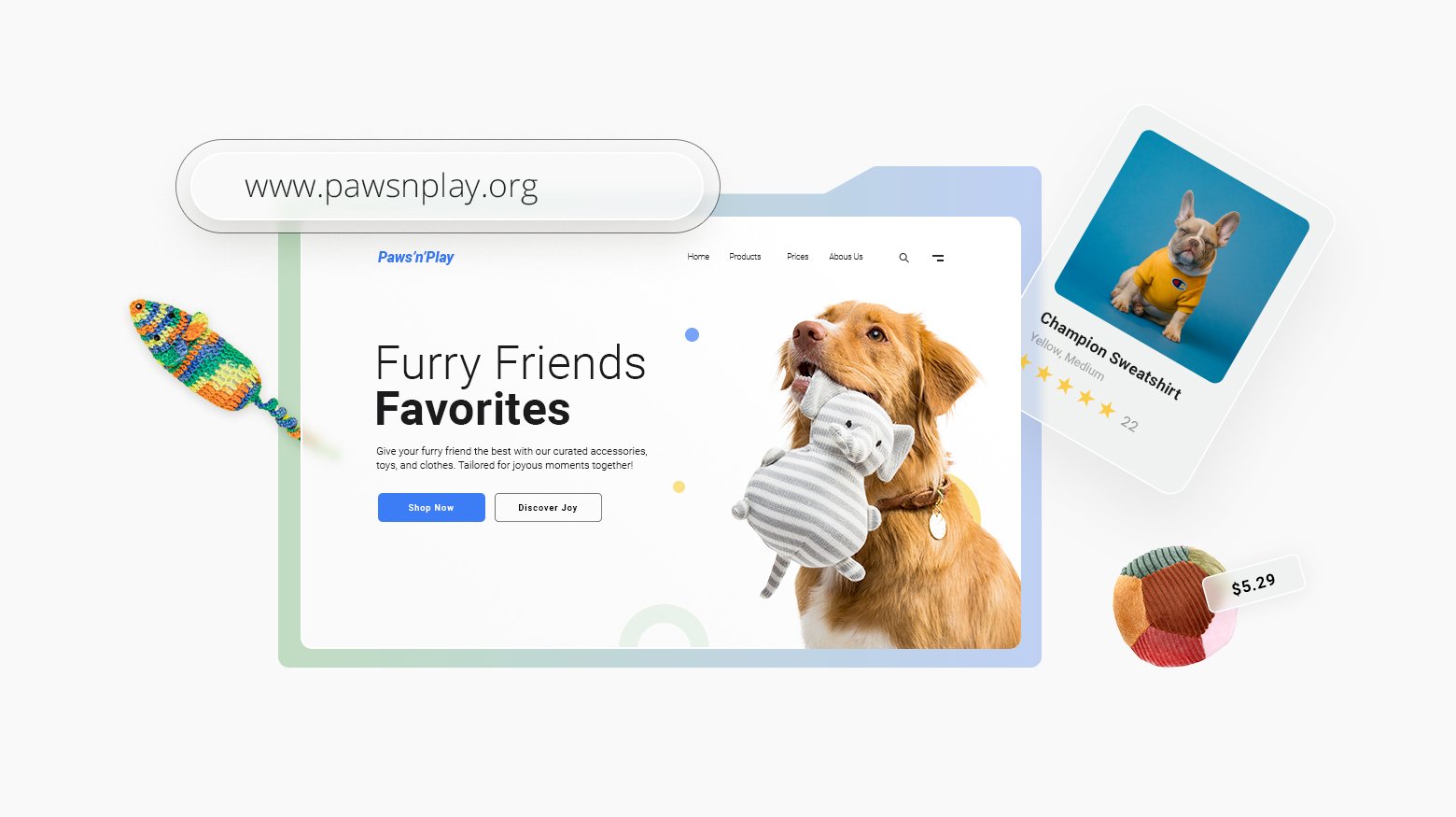Starting a perfume business offers immense opportunities for innovation and personalization, allowing you to craft unique scents and build a brand that resonates with consumers. With growing niche markets and the demand for distinctive fragrances, the perfume industry provides a dynamic and rewarding space for passionate entrepreneurs. This guide covers essential steps like understanding fragrances, creating a business plan, legal compliance, and financial preparation.
Create your custom online store in minutes with 10Web AI Ecommerce Website Builder and take your business online. 
Looking to sell online?
Stage 1: Getting started in the perfume industry
Entering the perfume business involves learning about fragrances, creating a solid business plan, and choosing the right structure for your company.
Step 1: Understanding the fragrance industry
The perfume industry is a colorful and competitive field.
Learning about different fragrance notes and trends is essential. Fragrance notes refer to the individual scents that are blended to create perfumes. These include top notes, middle notes, and base notes. You can start by researching popular perfumes to understand what consumers love.
Analyzing competitors helps you figure out where your brand can stand out. Look at established brands and note their strengths and weaknesses. This can give you ideas on how to position your perfumes differently.
Drafting a detailed business plan
A business plan is your blueprint for success.
Start with market research to identify your target audience and understand their preferences. This involves creating customer profiles based on age, gender, lifestyle, and other factors.
Next, outline your product offerings. Are you creating luxury perfumes, affordable scents, or eco-friendly options? Each choice affects your marketing and sales strategies.
Your business plan should include a financial plan. Estimate your startup costs, including materials, production, and marketing. Determine how much funding you need and explore potential sources, like loans or investors.
Choosing the right business structure
Selecting a business structure affects your taxes, liability, and ease of operation.
You can choose from several structures:
- Sole proprietorship: Simple and inexpensive, this is ideal if you’re starting alone and want full control.
- Partnership: If you’re teaming up with someone, this structure lets you share profits and responsibilities.
- LLC (Limited Liability Company): Offers more protection by separating personal and business assets, great for minimizing personal risk.
- Corporation: More complex and suited for larger businesses planning to raise significant capital or eventually go public.
Each structure has pros and cons, so consult a legal advisor to ensure you make the best choice. Starting right can save you time and trouble as your perfume business grows.
Step 2: Legal and financial preparation
Before launching your perfume business, it’s essential to address legal and financial steps to ensure smooth operations. Here’s a breakdown of key steps, including business registration, compliance, and securing funding.
Registering your perfume business
Starting with the basics, you must register your business with appropriate authorities. This process may involve:
- Choose a business structure: Decide on the type of business entity (e.g., sole proprietorship, LLC, corporation).
- Obtain an Employer Identification Number (EIN): You can get this through the IRS. It’s required for tax purposes.
- Register your business name: Ensure it’s unique and meets legal standards.
- State and local permits: Check what licenses and permits are needed in your state and locality.
Setting up a business bank account early on helps in managing finances efficiently. Also, consider getting a business license as proof of legitimacy.
Understanding compliance and regulations
To legally sell perfumes, understanding and complying with regulations is vital:
- Labeling and packaging: Comply with FDA requirements for cosmetic labeling, including ingredient lists and warnings.
- Safety standards: Ensure your products meet safety standards set by regulatory bodies.
- Permits: Obtain necessary permits for manufacturing, handling, and selling perfumes.
- Insurance: Get business insurance, including product liability insurance to protect against potential legal issues.
Staying compliant helps avoid fines and ensures your business runs smoothly.
Securing funding and managing finances
Securing financial support is crucial for starting and growing your perfume business. Key steps include:
- Create a detailed financial plan: Include startup costs, projected income, and expenses.
- Prepare financial statements: Have balance sheets, income statements, and cash flow statements ready.
- Seek funding: Explore options like loans, grants, or investors. Prepare a solid business plan to present to potential lenders or investors.
- Manage finances: Use accounting software to keep track of your income and expenses.
Regular financial reviews help ensure your business remains profitable and sustainable.
Addressing these aspects methodically will set a solid foundation for your perfume business, helping you navigate legal and financial challenges effectively.
Step 3: Intellectual property and brand protection
Safeguarding your brand and its unique elements is crucial in the perfume industry. This includes securing trademarks for your name and logo, as well as protecting your fragrance formulas and product designs against copying by competitors.
Securing trademarks for your brand
A trademark protects your brand name, logo, and sometimes even slogans related to your business. To secure a trademark:
- Evaluate your name and logo: Ensure they are unique and not similar to existing trademarks.
- Conduct a trademark search: Use online databases to check if your brand name or logo is already taken.
- File a trademark application: Submit your application through the appropriate trademark office. This can be done online through the United States Patent and Trademark Office (USPTO) for the U.S.
- Maintain your trademark: Regularly monitor the market for potential infringements and renew your trademark when required.
By following these steps, you can secure exclusive rights to your brand elements and prevent others from using them without permission.
Protecting formulas and design
Your perfume formulas and packaging designs are valuable assets that need protection:
Consider trade secrets: Keep your fragrance formulas confidential. Share them only with trusted partners and employees under non-disclosure agreements (NDAs).
Explore patents: While it’s challenging, some unique formulas and methods can be patented. This offers legal protection and prevents others from replicating your scents.
Design protection: Register your bottle and packaging designs to safeguard your brand identity. This helps maintain a unique presence in a competitive market.
Vigilance: Stay proactive in monitoring competitors and the market to ensure your unique elements are not being used without permission.
Protecting these aspects ensures your products stand out and your brand story remains intact, even amid fierce competition.
Create your custom online store in minutes with 10Web AI Ecommerce Website Builder and take your business online. 
Looking to sell online?
Stage 2: Developing your perfume brand and product
Creating a successful perfume brand involves understanding the market and crafting a unique identity that resonates with consumers. Key elements include conducting thorough market research, developing a strong brand identity, and designing distinctive logos and packaging.
Step 1: Conducting thorough market research
Market research is crucial to understand your potential customers and competitors. You need to identify your target market and determine what scents they prefer. Are they looking for luxury fragrances, or do they prefer something more affordable?
Research different demographics, like age, income level, and location, to fine-tune your product offerings. Analyze competitors by studying their pricing, marketing strategies, and customer feedback. This helps you identify gaps in the market where your product can stand out. Use surveys, focus groups, and online research tools to gather data.
Engage with potential customers directly to gain insights. Look for trends and preferences in fragrance notes, bottle designs, and branding styles. The more data you collect, the better you can tailor your brand to meet market demands.
Step 2: Creating a unique brand identity
Your brand identity should set you apart from others in the market. Start by defining your unique selling proposition (USP). What makes your perfume special? Is it the use of natural ingredients, a specific scent profile, or an inspiring brand story?
Develop a clear brand voice and tone. Decide whether your brand will be elegant, playful, or edgy. Consistency in messaging helps build recognition and trust. Your brand values should reflect what is important to your target market.
Craft a compelling brand story that resonates emotionally with your customers. This could involve the origins of your scent, the inspiration behind the brand, or the ethical practices you follow. A strong brand identity helps create loyalty and sets a foundation for marketing efforts.
Designing your logo and packaging
Your logo and packaging are the first things customers notice, so they should be eye-catching and reflect your brand identity. A logo needs to be simple, memorable, and versatile. Consider hiring a professional designer to create a logo that conveys your brand’s essence.
Packaging design is equally important. Choose materials and shapes that stand out on shelves. The design should reflect your brand’s quality and message. For example, luxurious brands might use sleek glass bottles, while eco-friendly brands could opt for recyclable packaging.
Include essential details on the packaging like the fragrance name, ingredients, and volume. Make sure the packaging is functional and protects the product. Unique and attractive packaging can greatly enhance the customer experience and encourage repeat purchases.
By focusing on market research, brand identity, and appealing design, you set a strong foundation for your perfume business.
Step 3: Product development and testing
Creating a successful perfume business involves sourcing high-quality materials, developing a unique fragrance, and ensuring the product meets safety standards through rigorous testing. This process is essential to differentiate your brand and satisfy customer expectations.
Sourcing quality ingredients
To make a high-quality perfume, you must start with the best ingredients. Look for top-grade essential oils, aromatic compounds, and perfume absolutes.
Build relationships with reputable suppliers who offer pure and unadulterated raw materials. Reliable sources ensure your final product maintains a consistent smell and performance.
Perform regular quality checks on your supplies. This step ensures that only the finest ingredients go into your perfumes, which can set your brand apart from competitors.
Create your custom online store in minutes with 10Web AI Ecommerce Website Builder and take your business online. 
Looking to sell online?
Crafting your signature scent
Work with skilled perfumers to develop your own signature scent. These experts can help you create fragrances that match your vision and brand identity.
Start by experimenting with different ingredients and concentrations. This phase involves trial and error to find the right balance of top, middle, and base notes.
Use small-scale batches to refine your formula. Once you finalize a scent, document the recipe precisely. This documentation helps maintain consistency in future production.
Iterative testing and feedback
Testing is crucial to ensure your perfume’s quality and safety. First, conduct stability tests to check how the fragrance holds up over time and under different conditions.
Next, gather a test group to provide feedback on your scent. This feedback can offer insights into how people perceive your fragrance and what improvements might be needed.
Finally, ensure compliance with all safety regulations. This includes verifying that your perfume is free from harmful substances. Regularly revisiting your formula and testing methods can lead to continuous improvement.
Step 4: Production and supply chain management
Setting up a perfume business involves several critical areas. You’ll need to establish production equipment, choose trustworthy suppliers, and efficiently manage inventory and orders.
Setting up your production equipment
The right equipment is the backbone of your perfume production. Invest in high-quality mixing tanks, bottling machines, and labeling devices. Mixing tanks help ensure your scent blends are uniform. Bottling machines handle the precise and hygienic filling of perfume bottles. Labeling devices automate the accurate placement of labels on bottles, increasing the efficiency of production. Additionally, proper storage equipment for raw materials and finished products is essential to maintain quality.
Be sure to comply with industry regulations by using safe materials and proper ventilation systems. Allocate a clean and controlled environment for production to avoid contamination. Regular maintenance and calibration of equipment are crucial to avoid breakdowns and ensure consistent quality.
Choosing reliable suppliers and partnerships
Select suppliers who provide high-quality raw materials such as essential oils, alcohol, and packaging components. Partnering with reputable vendors can assure you of consistency in quality. Research potential suppliers thoroughly, checking their reviews and testimonials. Establish clear communication channels to swiftly handle any issues that may arise.
Building partnerships with manufacturers can also be advantageous. They may offer better pricing for bulk purchases and more flexibility with customized products. It’s often beneficial to have multiple suppliers to mitigate risks like supply chain disruptions. Long-term relationships with reliable partners can help negotiate favorable terms and ensure the steady flow of materials.
Managing inventory and fulfilling orders
Efficient inventory management is key to your perfume business. Implement inventory tracking software to keep an up-to-date record of stock levels. Regular audits can help you identify discrepancies and manage your stock more effectively. Use a systematic approach to restock raw materials and finished products to avoid shortages.
For order fulfillment, streamline the process by setting up an organized warehouse system. Categorize and label items correctly for quick access. A fast and accurate fulfillment process increases customer satisfaction. Consider automation tools for order processing to handle multiple orders efficiently.
By focusing on these specific areas, you set a strong foundation for smooth production and supply chain operations, ensuring your perfume business runs effectively and meets customer expectations.
Create your custom online store in minutes with 10Web AI Ecommerce Website Builder and take your business online. 
Looking to sell online?
Stage 3: Marketing and selling your perfume
Successfully marketing and selling your perfume involves developing strong strategies, leveraging social media and e-commerce, and establishing reliable distribution channels. These steps will help you connect with your target audience and build a strong market presence.
Step 1: Strategy development for marketing and sales
Developing a marketing strategy is crucial to reach your target audience. First, identify who your customers are and what they want in a perfume. Are they looking for luxury scents or affordable daily wear? Understanding these preferences will guide your product presentation.
Next, determine your budget for marketing. Allocate funds for online ads, printed materials, and events. Using a mix of both digital and traditional methods is often effective.
Create compelling marketing materials, including high-quality photos, engaging descriptions, and promotional offers. Your brand identity should be consistent across all materials to build recognition. Track market trends to stay updated and tweak your strategies accordingly.
Leveraging social media and ecommerce
Social media and e-commerce platforms are powerful tools for perfume marketing. Start by creating profiles on popular platforms where your target audience spends their time, such as Instagram, Facebook, and TikTok. Post regularly with eye-catching images and videos of your products.
Engage with your audience through comments, likes, and direct messages. Run ads targeting specific demographics and interests related to your products. Host online events like live streams or webinars to showcase your perfumes.
Set up an e-commerce store on platforms like Shopify, Etsy, or Amazon. Ensure your online presence is professional with clear product listings, attractive photos, and easy payment options. Offer promotions and limited-time discounts to drive sales. Email marketing can also drive traffic to your store and keep customers informed about new launches.
Establishing distribution channels
Having reliable distribution channels ensures that your perfume reaches your customers efficiently. Start by partnering with retail stores that align with your brand. This could be boutiques, department stores, or specialty perfume shops. Provide these partners with marketing materials and fragrance samples to promote your products.
Online marketplaces are another key channel. In addition to your e-commerce store, consider selling on major platforms such as Amazon and eBay. This expands your reach to a broader audience.
Explore local and international opportunities to distribute your perfumes. Attend trade shows and networking events to connect with potential distributors. Create agreements outlining terms and expectations with each distributor to ensure a smooth partnership.
Step 2: Building an online store
When starting a perfume business online, focusing on website design and optimization for sales and traffic is key. You want your store to be visually appealing and easy to navigate, while also driving traffic and converting visitors into customers.
Creating a user-friendly website is crucial. Start by choosing an ecommerce platform like 10Web. This platform provides an AI Ecommerce Website Builder for creating and editing your online store in minutes.
Key points to consider:
- Easy Navigation: Make sure visitors can find products quickly by having clear categories and a simple search bar.
- Mobile Responsiveness: Ensure your website looks good on both desktop and mobile devices.
- High-Quality Images and Descriptions: Use professional photos and detailed descriptions to show off your perfumes.
- Customer Reviews: Include customer reviews to build trust and provide social proof.
Create your custom online store in minutes with 10Web AI Ecommerce Website Builder and take your business online. 
Looking to sell online?
Designing a user-friendly website
Establishing an online store for your perfume business is essential for expanding your customer base and boosting sales. Utilizing modern tools and platforms allows you to set up your online shop swiftly and effectively. A top choice for this is 10Web, which provides an AI-powered ecommerce website builder that streamlines the entire process.
In this section, we will walk you through the steps to launch your online perfume store using 10Web, helping you create a professional and appealing site in just minutes.
- Go to 10Web.io
- Click on Generate your website

- From the options, choose Create a new website with AI

- Choose to create a website with an online store

- Select your store type and click Next

- Fill in the name of your business and a short description. You can enhance the description using AI.
- Choose Yes to get a domain or click No if you have one already
- Enter your domain name if you have chosen No (optional).
- Click Next

- Set the 3 main products and categories. This section is pre filled by AI, however, you can edit it as needed
- Click Generate to create your website

Optimizing for online sales and traffic
Optimization helps attract visitors and turns them into buyers. Start by implementing search engine optimization (SEO) strategies to improve your site’s ranking on search engines.
Effective strategies include:
- Keyword integration: Use relevant keywords in your product titles, descriptions, and blog content.
- Fast load times: Ensure your website loads quickly to prevent visitors from leaving.
- Email marketing: Collect emails and send newsletters to promote new products and offers.
- Social media: Use platforms like Instagram and Facebook to drive traffic to your site.
By focusing on these areas, you can build a successful online presence that attracts and retains customers.
Step 3: Pricing strategies and profitability
It’s crucial to set the right prices for your perfume products while ensuring profitability. You’ll need to consider various cost factors and create realistic financial projections.
Determining cost and pricing models
Start by calculating all your startup costs. These include raw materials, packaging, marketing, and any other initial expenses. Remember, creating a luxury or high-end perfume line can be expensive, so take that into account.
When setting prices, you can use several models:
- Cost-plus pricing: Add a markup to your total cost.
- Market-oriented pricing: Adjust your prices based on competitor prices.
- Premium pricing: Set higher prices for luxury scents.
Test different models to find what works best for your target market.
Financial projections and profit margins
Create detailed financial projections to gauge profitability. Use a table or spreadsheet to track your expected revenues and expenses over time. Predict your sales volumes and price points, then calculate your profit margins.
A good profit margin in the fragrance industry typically ranges from 10% to 20%. To ensure sustainability, regularly review and adjust your pricing strategy based on your financial data.
Continuously monitoring and adjusting your financial plans help in maintaining a profitable perfume business.
Step 4: Expanding your market reach
To grow your perfume business, you need to explore new markets and trends and network with industry peers. This approach helps you stay competitive and reach a wider audience.
Exploring new markets and trends
Dive into market research to spot emerging trends in the fragrance market. Keep an eye on niche markets that may be underserved by current competitors.
Targeting specific demographics with unique products can set your brand apart. For example, eco-friendly or organic perfumes are gaining popularity.
Analyze your target market’s preferences and buying habits to tailor your offerings. Use social media and online tools to gather insights and feedback. Keep your brand fresh by continuously innovating based on the latest trends.
Collaborating and networking with industry peers
Build partnerships with other businesses in the fragrance industry. Collaborations can lead to cross-promotions, joint events, and co-branded products, expanding your reach.
Attend industry events and trade shows to connect with potential partners and learn from competitors. These events are also a great way to stay updated on market trends.
Networking can lead to valuable insights and opportunities. Engage with online forums, groups, and professional associations to exchange ideas and gain support from peers. Networking helps you forge relationships that can benefit your business in various ways.
Step 5: Operational excellence and customer satisfaction
To run a successful perfume business, you need to manage your daily operations effectively and always keep your customers happy. This section will guide you through optimizing your operations and creating loyal, satisfied customers.
Effectively managing daily operations
Running a perfume business smoothly requires a well-thought-out operations plan. Consistency is key in producing high-quality fragrances that match customer expectations every time.
- Set up a standard procedure for production. This ensures every batch smells just right and can be reproduced.
- Track your inventory diligently to avoid running out of stock or overstocking.
- Invest in training for your team. Skilled workers are more efficient and less likely to make mistakes.
- Use technology to streamline processes, such as software for managing orders and tracking shipments.
- Regularly review and improve your processes by gathering feedback from your team and customers on operational efficiency.
Fostering customer loyalty and joy
Customer satisfaction should be at the heart of your perfume business. Happy customers not only return but also spread the word about your brand.
- Provide exceptional customer service. Be responsive and solve issues quickly to maintain a positive experience.
- Create a loyalty program for repeat customers with special offers and discounts.
- Engage with customers on social media to make them feel valued and connected to your brand.
- Personalize the shopping experience with tailored recommendations based on their past purchases and preferences.
- Request feedback regularly and act on it to show customers their opinions matter.
By excelling in operations and focusing on customer satisfaction, you build a strong, reputable perfume business that customers love and trust.
Conclusion
The perfume business offers exciting opportunities for innovation and personalization, enabling you to craft unique scents and build a resonant brand. This guide has covered essential steps such as understanding fragrances, creating a business plan, ensuring legal compliance, and securing financial stability. Additionally, it has explored market research, brand identity development, product testing, and effective marketing strategies. This knowledge helps you navigate the complexities of the perfume industry, setting a strong foundation for your business. With the right approach, you can create a successful and distinctive perfume brand that captures the attention of consumers and stands out in a competitive market.
FAQ
Is a perfume business profitable?
Yes, a perfume business can be very profitable. The industry benefits from high consumer demand for unique and personalized scents. By creating a distinctive brand and catering to niche markets, you can achieve significant margins. Effective marketing, quality products, and a strong brand identity are crucial for profitability.
How much does it cost to start a perfume line?
Starting a perfume line typically costs between $10,000 to $25,000. This estimate includes expenses for raw materials, production equipment, packaging, marketing, and legal compliance. Costs can vary based on the scale of your operation and whether you opt for luxury or more affordable product lines.
How do I start a small perfume business from home?
To start a small perfume business from home:
- Research and education: Learn about fragrance notes, blending techniques, and industry trends.
- Business plan: Outline your business goals, target market, product offerings, and financial plan.
- Supplies and equipment: Purchase high-quality essential oils, alcohol, bottles, and mixing equipment.
- Legal compliance: Register your business, obtain necessary permits, and comply with safety regulations.
- Branding: Create a unique brand identity with a compelling story, logo, and packaging design.
- Production: Start small-scale production, ensuring consistency and quality.
- marketing and sales: Utilize social media, e-commerce platforms, and local markets to promote and sell your products.
How can I start making my own perfume?
To start making your own perfume:
- Gather supplies: Obtain essential oils, alcohol (such as vodka or perfumer’s alcohol), distilled water, and empty perfume bottles.
- Learn the basics: Understand the fragrance pyramid—top, middle, and base notes. Research blending techniques and recipes.
- Experiment: Begin by blending small batches. Start with a few drops of each oil, adjusting the ratio to achieve the desired scent.
- Test and refine: Allow the blend to sit for a few days, then test it. Make adjustments as needed and document your recipes.
- Bottle and store: Once satisfied with your blend, bottle your perfume and store it in a cool, dark place to maintain its quality.


